Carnival of taste, a dive into tradition with the Carnival Soup that warms the winter.
The Carnival soup: a symphony of flavors and aromas that envelop the palate in a warm embrace, perfect for cold winter days. An ancient dish, rich in history and tradition, passed down from generation to generation, offering a unique and unforgettable culinary experience. Imagine: the carnival rages outside with its colorful masks and contagious joy. You, instead, take refuge in the warmth of your home, enveloped by the intoxicating aroma of the soup slowly cooking in the earthenware pot. A ritual that repeats, year after year, a moment of sharing and joy to be lived with family and friends. The Carnival soup: A simple dish, but rich in genuine ingredients and authentic flavors. Pork ribs, pigskin, sweet pancetta, and beef tongue blend in a gustatory embrace, enriched by the aromatic notes of leek, celery, white onion, and carrot. Borlotti beans add a touch of texture and creaminess, while savoy cabbage provides a bold and unmistakable flavor. A touch of magic: a pinch of garlic powder, cloves, whole white pepper, and salt complete the symphony of flavors, making the soup irresistibly tasty. A drizzle of extra virgin olive oil and the addition of water give the right consistency, creating a creamy velvety texture that caresses the palate. The cherry on the cake: a sprinkle of grated Grana Padano cheese and a sprig of fresh coriander add a touch of elegance and refinement to the dish. A final touch of magic that makes the Carnival soup a true culinary masterpiece. Not just a dish, but an experience: the Carnival soup is a sensory journey that recalls childhood memories and carnival cheer. An invitation to rediscover the flavors of tradition and to experience the carnival with taste and sharing. Get ready to dive into a whirlwind of flavor with the Carnival Soup: a simple dish, but with an unmistakable flavor, that will make your carnival truly special.
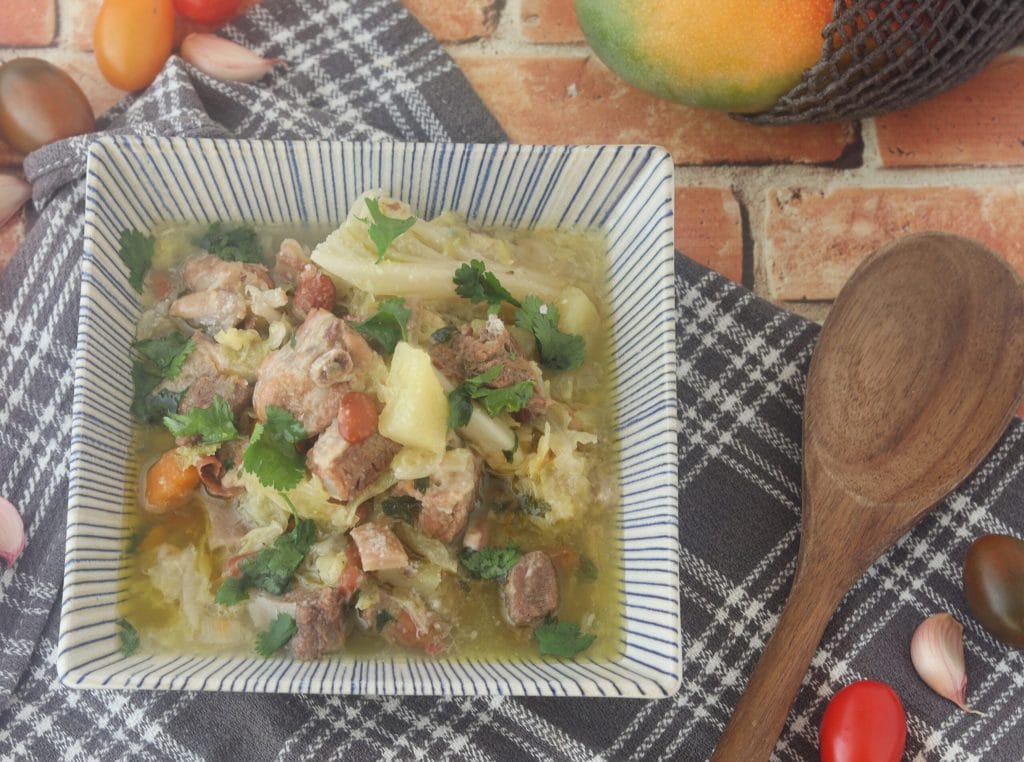
- Difficulty: Easy
- Cost: Economical
- Rest time: 10 Minutes
- Preparation time: 45 Minutes
- Portions: 4
- Cooking methods: Slow cooking
- Cuisine: Italian
- Seasonality: Winter
- Energy 757.82 (Kcal)
- Carbohydrates 10.35 (g) of which sugars 1.32 (g)
- Proteins 59.68 (g)
- Fat 51.92 (g) of which saturated 16.44 (g)of which unsaturated 16.27 (g)
- Fibers 3.99 (g)
- Sodium 1,366.58 (mg)
Indicative values for a portion of 11 g processed in an automated way starting from the nutritional information available on the CREA* and FoodData Central** databases. It is not food and / or nutritional advice.
* CREATES Food and Nutrition Research Center: https://www.crea.gov.it/alimenti-e-nutrizione https://www.alimentinutrizione.it ** U.S. Department of Agriculture, Agricultural Research Service. FoodData Central, 2019. https://fdc.nal.usda.gov
Ingredients
- 4 pork ribs
- 7 oz pigskin
- 3.5 tbsp butter
- 3.5 oz sweet pancetta
- 5 oz beef tongue
- 7 oz borlotti beans
- 3.5 oz grated Grana Padano
- 2 white onions
- 2 carrots
- 1 leek
- 2 celery
- Half savoy cabbage
- 1 tsp garlic powder
- 2 cloves
- to taste whole white pepper
- 2 g salt
- 1 drizzle extra virgin olive oil
- 6.5 cups water
- to taste Lardo di Colonnata
- 1 sprig coriander (Optional)
Tools
- 1 Earthenware pot
Steps
Prepare the veal tongue: Thoroughly rinse the tongue under running water. Make two random holes in the onion and insert a clove into each hole. In a large pot, combine the tongue, the onion with cloves, celery, carrot, bay leaf, salt, and whole white pepper. Cover with cold water and bring to a boil.
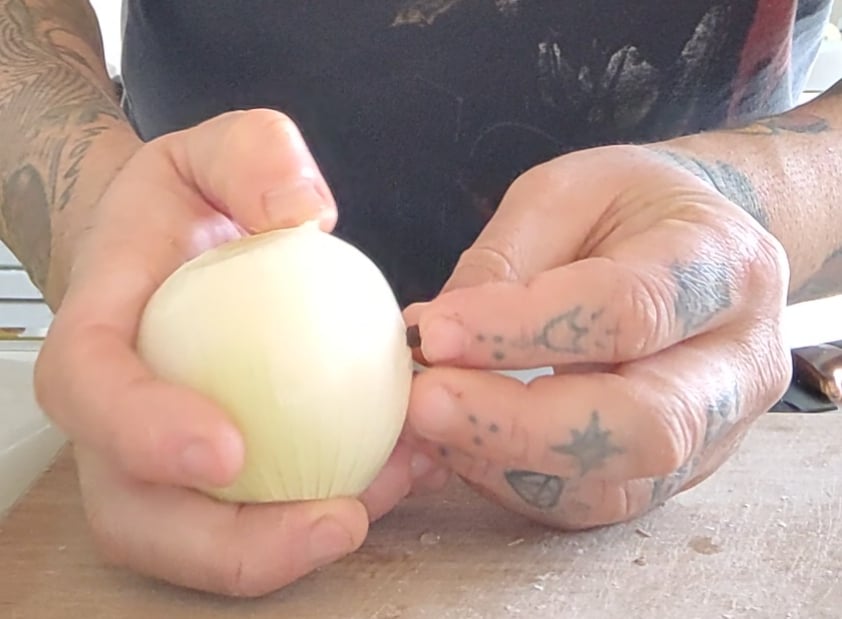
Lower the heat and simmer for about 2 hours, or until the tongue is tender.
Check the cooking by inserting a fork into the tongue: if it slides in easily, the tongue is cooked.
Let the beef tongue cool to room temperature. Clean the tongue with a sharp knife, removing the tougher skin. Cut the tongue into cubes of the desired size.
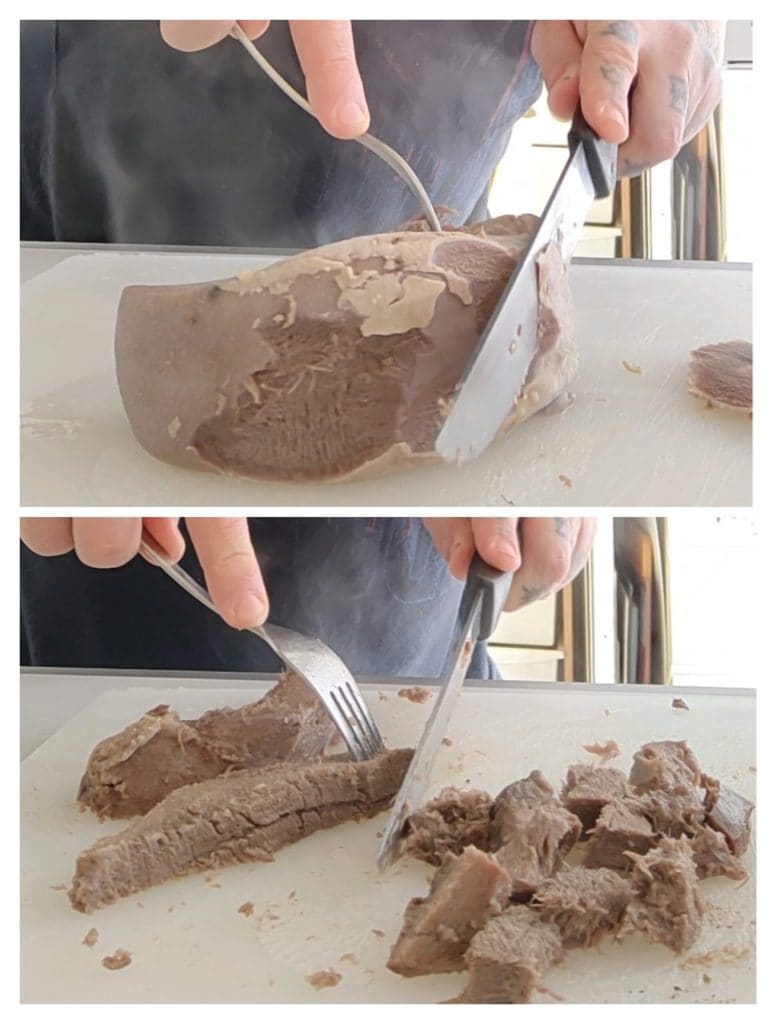
Vegetable sauté:
To prepare the Carnival Soup, we start with a vegetable sauté with intense flavor. Cut the celery, carrots, and onion into chunks: this way, they won’t completely dissolve during cooking and will give the soup a pleasant texture and a more pronounced flavor.
Tip: Choose seasonal and high-quality vegetables to achieve an excellent result.
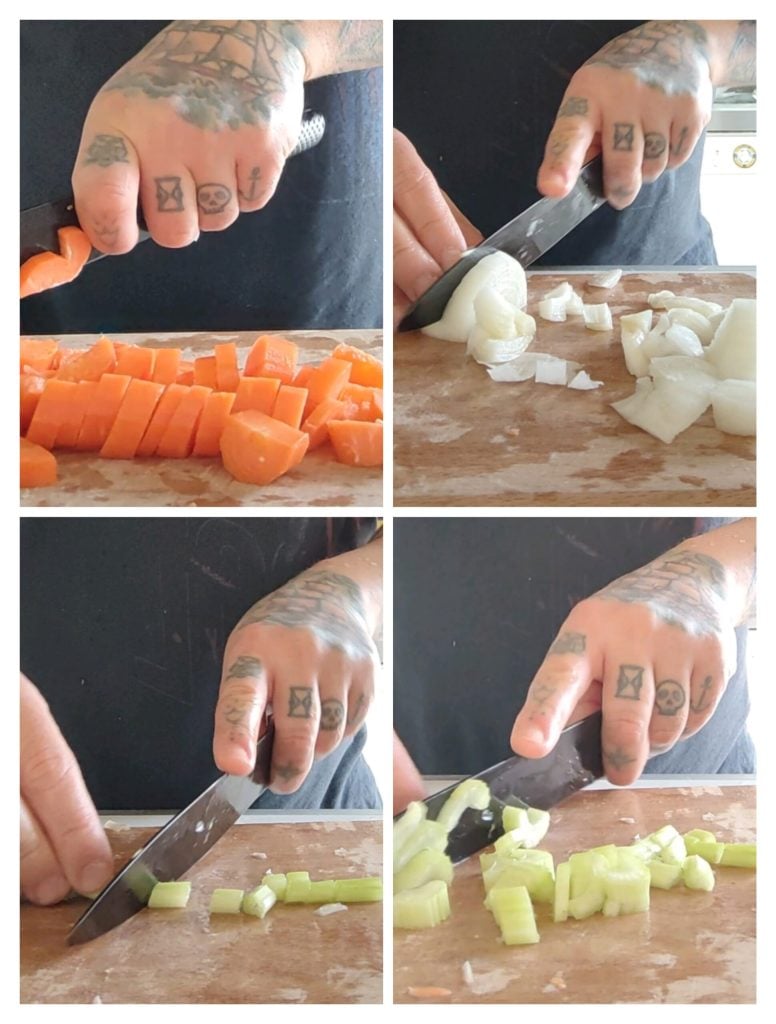
A touch of butter for intense flavor: Use a generous amount of butter for the sauté, which will give a rich and irresistible flavor to our soup. For cooking, choose an earthenware pot: this material allows for slow and gentle cooking, bringing out the best flavors and textures of the ingredients.

For a golden and fragrant sauté: In an earthenware pot, gently melt a knob of butter with a drizzle of extra virgin olive oil. Add the chopped vegetables: celery, carrots, and onion. Sauté gently for about 10 minutes, stirring occasionally, until the vegetables are golden and fragrant.

Flavor the vegetables with butter and EVO oil for a minute before adding the diced pancetta.

After sautéing the vegetables for a few minutes, add the diced pancetta. Let it flavor everything for a minute, stirring occasionally, until the pancetta releases its characteristic aroma.
Tip:
For a more intense flavor, you can use smoked pancetta.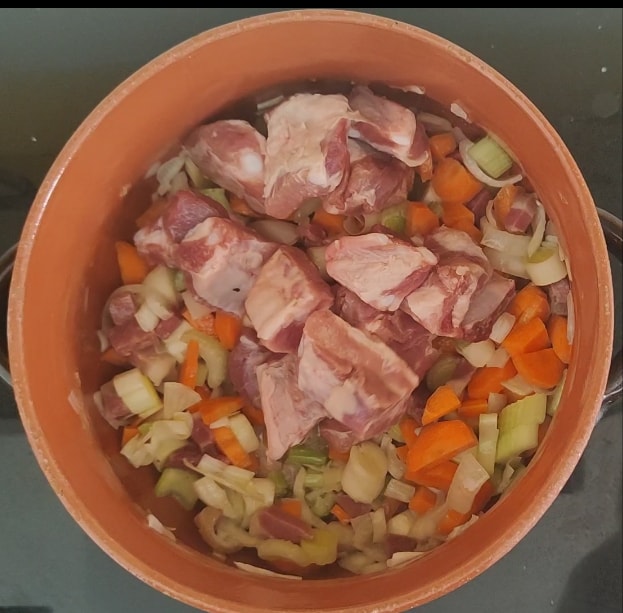
At this point, pour half a glass of dry white wine into the pot. Let the wine evaporate gently, stirring occasionally, until the alcoholic aroma has completely disappeared.
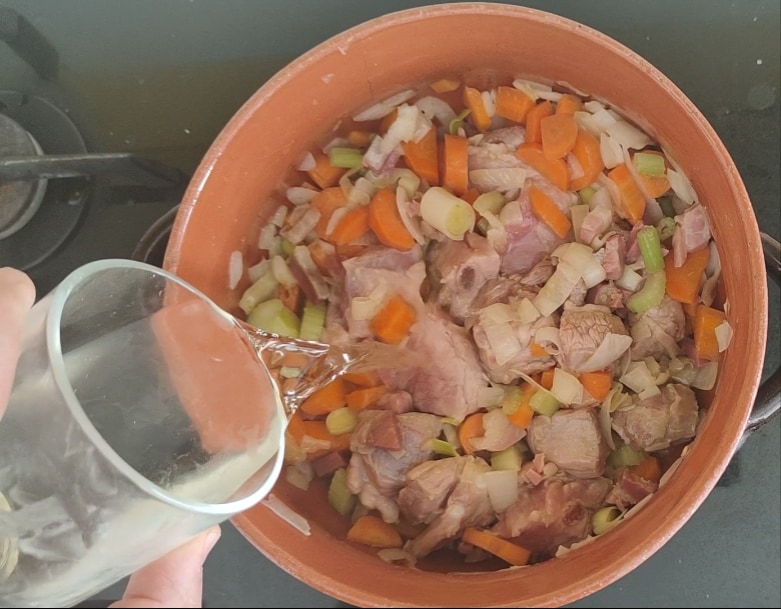
Once the wine’s alcohol has evaporated, add the chopped pork skin. Stir well to integrate the skin with the other ingredients. Sauté for a few minutes, until the skin turns golden.
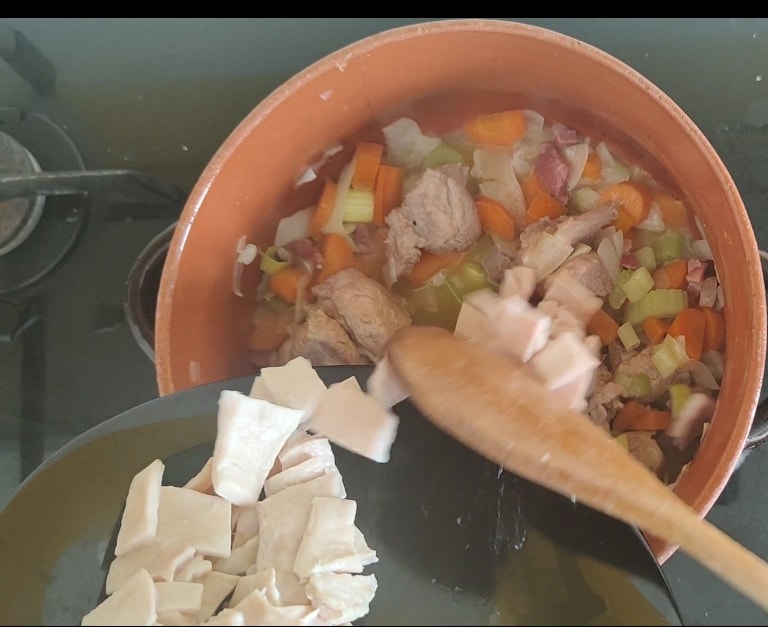
Finally, add warm water to completely cover all the ingredients. Bring to a boil over high heat, then lower the heat and cover with a lid.

Once boiling, add the salt and adjust the pepper to taste. Cover the pot with a lid and let it cook slowly for about 2 hours, or until the ribs and skin are tender to the right point.
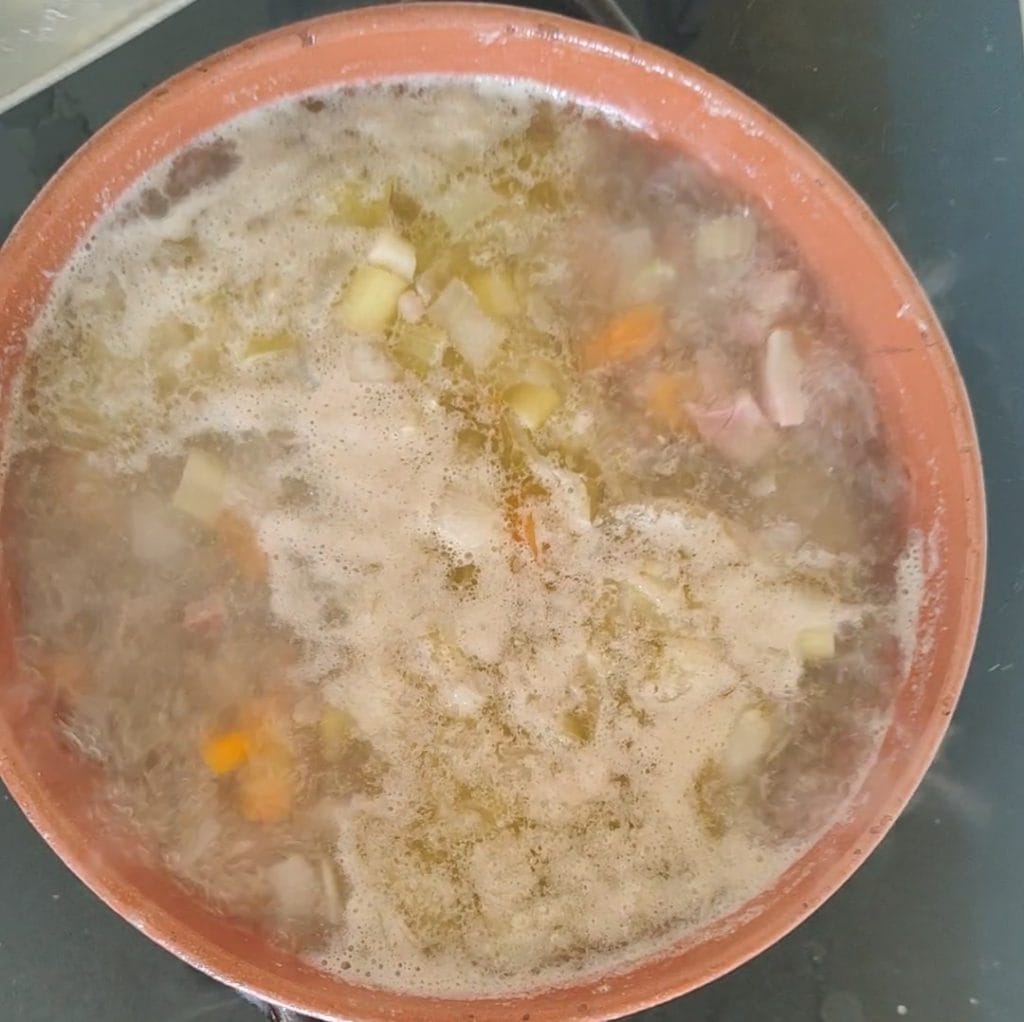
A touch of creaminess:
Once the time needed to cook the ribs and skin (about 2 hours) has passed, we can add the potatoes. The potatoes will give the soup a creamy texture and an even richer flavor.
Likewise, add the beans and potatoes. Both of these ingredients require a shorter cooking time than ribs and skin. Adding them at this moment will keep them intact and crunchy, giving the soup a touch of color and texture.
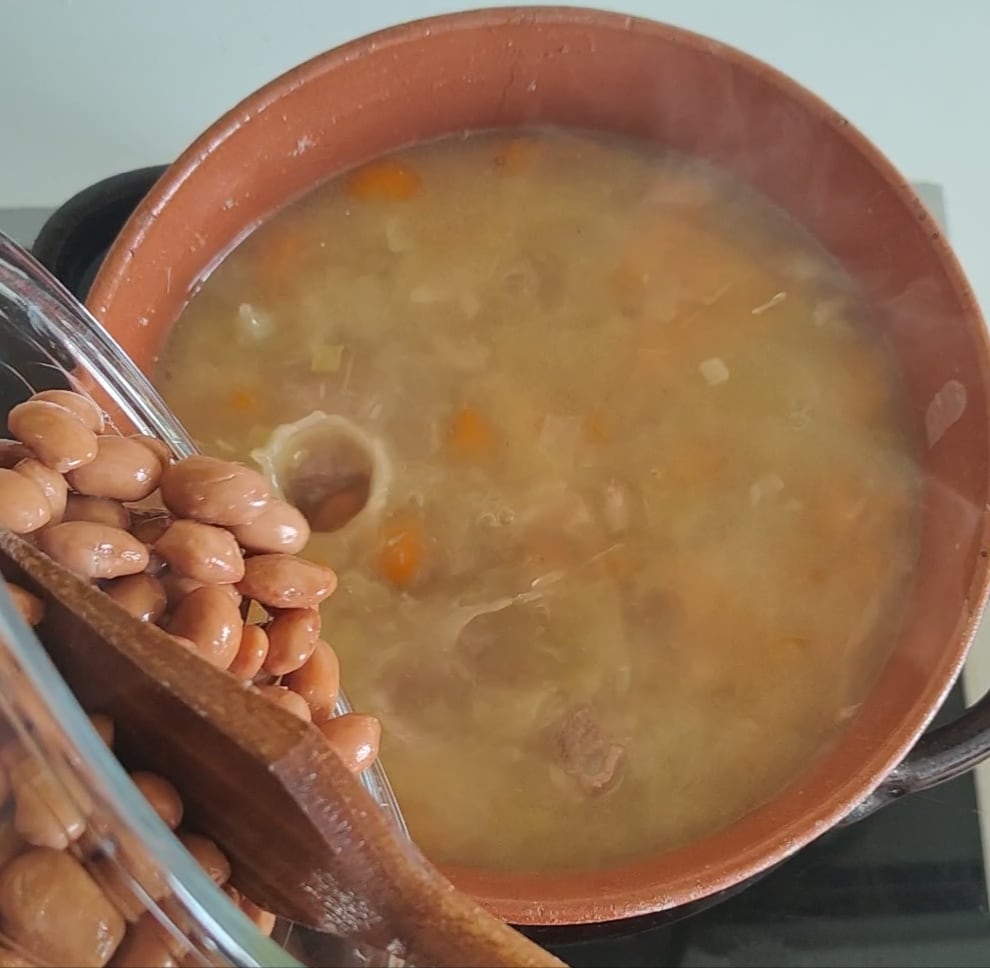
Finally, add the sliced savoy cabbage. The savoy cabbage will cook together with potatoes and beans, giving the soup a touch of freshness and color.
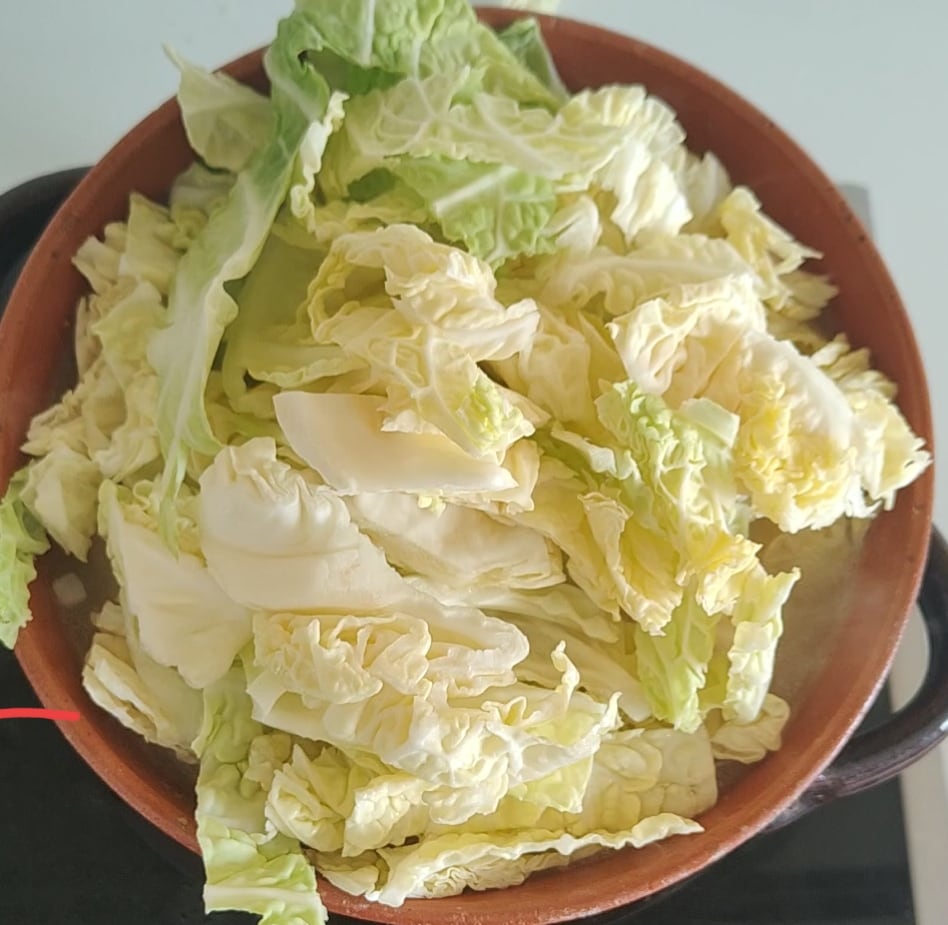
Cook for another 60 minutes over low heat, stirring occasionally. During cooking, we can add hot water if necessary to maintain the broth level.
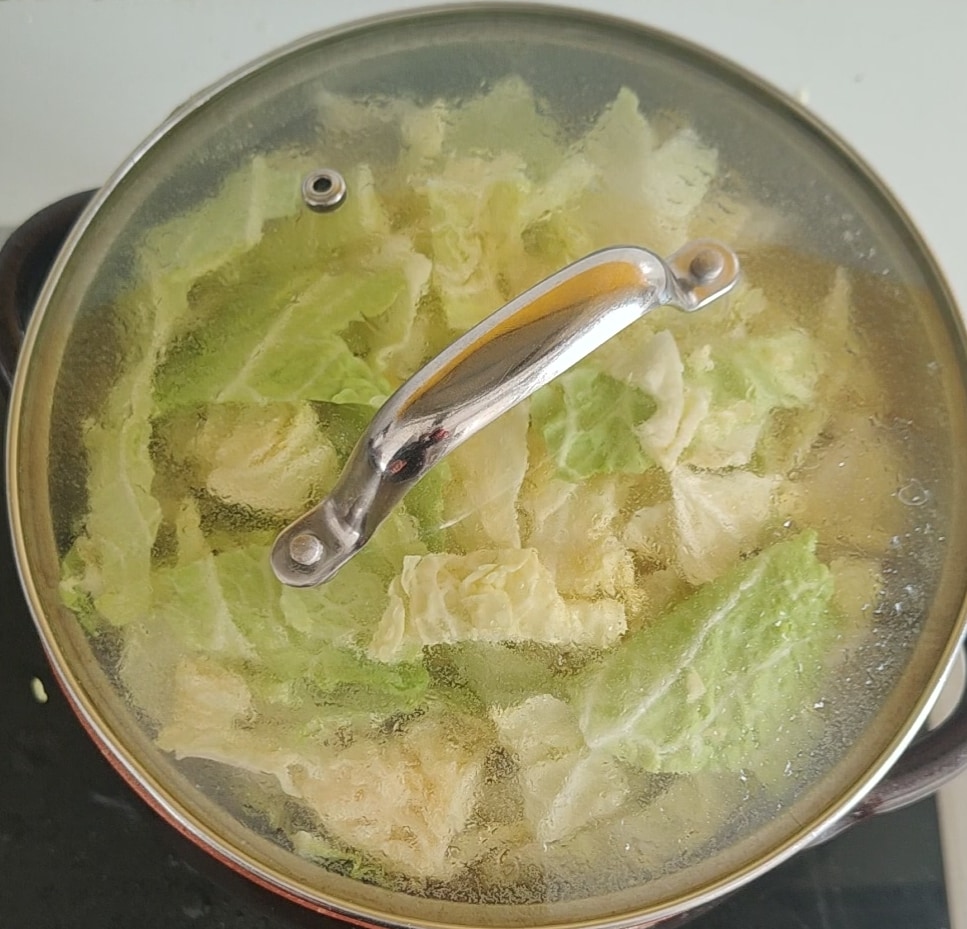
A final touch of taste:
Five minutes before turning off the heat, add the grated cheese, chopped parsley and, if desired, a pinch of black pepper to the soup. These ingredients will give the soup an even more intense flavor and an irresistible aroma.
Turn off the heat and cover the pot with a lid. Let the soup rest for 5 minutes: this will allow the flavors to meld and reabsorb perfectly.

Before serving, add the Lardo di Colonnata cut into cubes or thin slices. The lard will give the soup a touch of sapidity and an irresistible aroma. For a more intense flavor, we can heat the lard in a pan for a few seconds before adding it to the soup. Our Carnival Soup is finally ready! Serve it hot with fresh bread croutons and accompany it with a good glass of red wine.
Enjoy your meal from DadCook!.
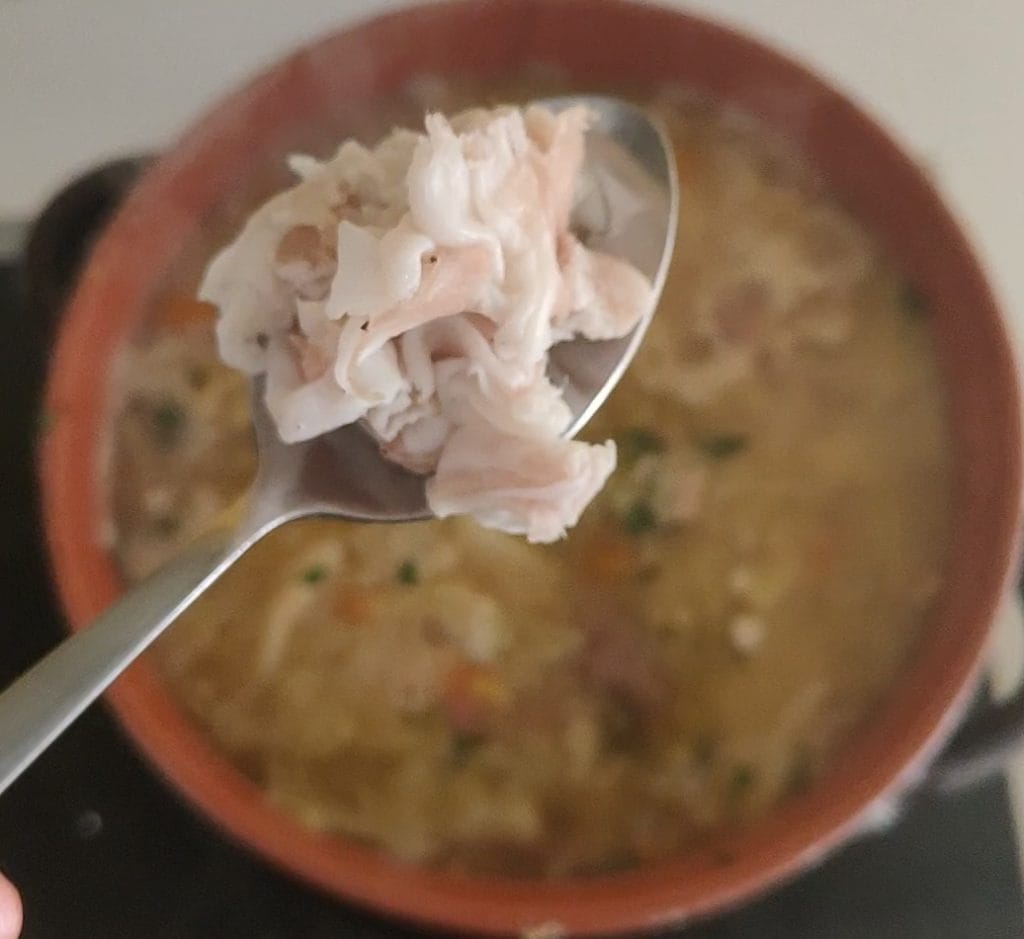
Wines to Pair with Carnival Soup:
The Carnival Soup is a rich and tasty dish, perfect for cold winter days. For a perfect pairing, I recommend a medium-bodied red wine with good acidity and light tannins.
Some red wine options:
Barbera d’Alba: notes of berries, spices, and licorice. Sangiovese di Romagna: notes of cherry, plum, and tobacco. Montepulciano d’Abruzzo: notes of berries, plum, and chocolate.
If you prefer a white wine:
Verdicchio dei Castelli di Jesi: notes of green apple, pear, and citrus.
Soave Classico: notes of almond, peach, and citrus.
Fiano di Avellino: notes of green apple, pear, and citrus.
Fiano di Avellino: notes of green apple, pear, and citrus.
Fiano di Avellino: notes of green apple, pear, and citrus.

